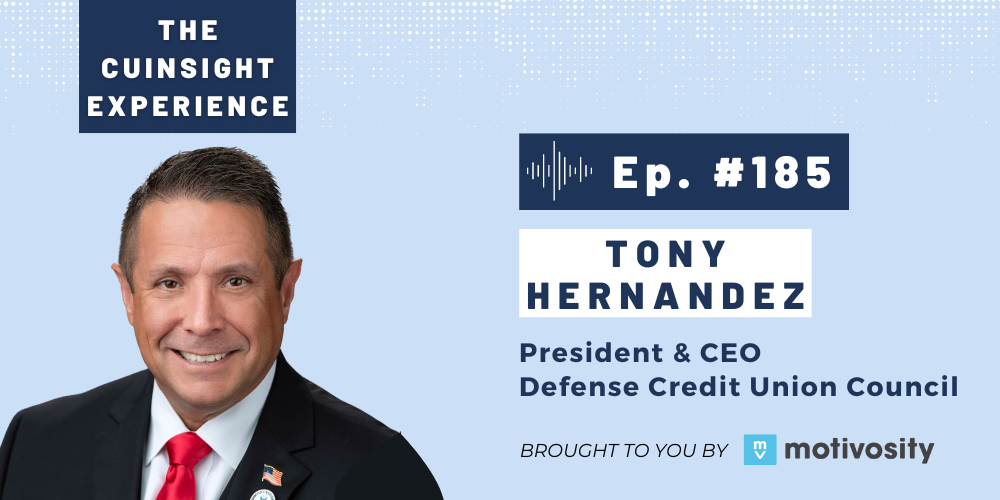In late 2019 and early 2020, when we prepared and first distributed our series on risk mitigation, we did so with the 10+ year bull market and other current economic variables in mind. We recognized that there were many possibilities on the horizon that could result in significant changes to the economy and affect the risk profile of credit unions and other financial institutions, and we wanted to offer insights that could help them prepare wisely.
Never did we predict that a global pandemic was going to be the trigger. International trade wars, a volatile political landscape, and the contentious upcoming 2020 election seemed more likely factors to put an end to the U.S.'s historic period of economic expansion. Those conditions are all still present, but obviously they have been superseded by the massive economic impact of COVID-19.
Still, we knew it was an important time to discuss the subject of risk mitigation and how credit unions and other financial institutions were preparing for a potential downturn. We think these pieces now more than ever offer valuable perspective when it comes to mitigating your institution's risk during both good times and difficult ones.
The balancing act of risk mitigation - with an eye on today’s economy
For credit unions, maintaining superior customer and borrower relationships is a vital priority. Just as critical for the ultimate success of any financial institution is prudent management of internal and external risk. Risk mitigation management positions are perhaps some of the least visible among the roles of executive management at a financial institution, but like the wizard behind the curtain, they are perhaps one of the most important in terms of striking balance between what is right for the financial institution and what provides a great experience for the customer.
Balancing these two priorities is a constant challenge. When you throw economic uncertainty and political volatility into the mix, that tightrope can seem even narrower.
Pre-Recession Indicators:
America’s last recession ended in June 2009, and that in itself is an indicator that a recessionary period is likely on the horizon at some point, whether sooner or later. A few of the factors risk mitigation specialists are keeping an eye on are:
- Yield curve margins
- Housing prices
- Economic growth spurred by trade relations vs. possible slowdowns caused by adversarial trade relationships
- Unemployment rates
- Increasing auto prices and lengthening loan terms, with more negative equity
Comparing and Contrasting 2007-2009 and 2019
The Great Recession that began in 2007 was in full swing ten years ago and took some lenders by surprise, generating catastrophic losses for some institutions. We sat down with several risk specialists from credit unions across the country to ask what they see as some of the similarities between then and now, as well as any differences they notice.
Dave Brydun
VP of Consumer Lending, BCU, Vernon Hills, IL:
“Our loan-to-share is pretty similar now to where it was 12 years ago, before the last recession beganin 2007, and unemployment is low, similar to that period. We’re seeing a pretty good economy in termsof the forecasts. Obviously, in lending having a low unemployment rate and strong consumer spendingare two good things, and those are still flashing green right now. I guess the question is, ‘Well, that’s thecurrent state, but will what’s going on behind the scenes with the manufacturing slowdown andtariffs and other various factors eventually start impacting consumer spending and employment?’”
Henry Robaszewski
Director of Risk Management, Finance, BCU, Vernon Hills, IL:
“We usually see all the indicators peak just before a recession starts. Like Dave said, everything’s looking good right now, but it did right before the last recession, too. So, everyone’s looking for that early indicator of ‘When is it going to turn?’ We’ve been looking at the yield curve, because the inversion has been an indicator of recessions in the past. There has been some inversion this time, but it hasn’t necessarily persisted, so we’re waiting to see if that does manifest itself … the Fed is starting to ease in trying to prevent that from happening. Whether they’ll ease quickly enough to prevent a recession or not remains to be seen.”
Dave Brydun:
“We’ve been talking about recession readiness now for probably two or three years and we’re still herein 2019 and it’s yet to hit. So, for us it’s just coming up with a readiness framework so that when theindicators start flashing in a direction other than they are today, we have a plan in place that we can activate.”
Eric Fuglister
VP Consumer Lending, Wings CU, Apple Valley, MN:
“Twelve years ago, we knew the craziness that was mainly going on in the mortgage market couldn’t lastforever … home prices were going up unbelievable amounts every year — 10% or more each year. Youhad borrowers who really didn’t qualify for loans — whether their credit scores were low or they werethe no-documentation, stated-income loans — all that stuff was pretty prevalent toward the end of thedecade, from 2006 on. It had the signs that this stuff just can’t last forever. I don’t think any of us thought it was going to unwind the way it did in terms of the severity and how it affected not only the U.S. economy, but even the world economy. Back then, I remember thinking for a couple of years that real estate and mortgages can’t keep doing what they’re doing. And they did and they did … and then finally, it all eventually broke and we obviously know what happened after that.”
Henry Robaszewski:
“To me, now it looks more like a growth slowdown as opposed to a collapse of the housing industry likewe saw 12 years ago, so hopefully any recession that happens won’t be as severe once it does and the impact won’t be as great. I think we’ve seen some potential pre-recession indicators, but I don’t know that we’ve seen the run-up in real estate prices that we did back in 2007. There has been some run-up in some regional areas, but I don’t think it’s been as widespread and I don’t think there’s the same lending practices in terms of nodocumentation loans and things like that that were more risky. So it’s probably unlikely that the same scenario would play out again.”
Dave Brydun:
“The last recession, the worst since the Great Depression, was primarily a real estate recession. And that was really brought on, in the years leading up to it, by much looser underwriting standards within the industry that have since been corrected. So hopefully, in terms of lenders and the lending environment, the recession isn’t as severe, because real estate loans are very high-dollar loans and the impact on a financial institution’s financials can be pretty severe if there is a greater deal of degree of losses that are concentrating in real estate versus other products.
“I think I tend to call it more ‘credit renormalization.’ Delinquencies and charge-offs probably bottomed out in terms of being really low, probably in 2015, 2016, and they have come up a little bit industry-wide, but I think we are and can probably continue to be in a very benign credit risk environment. For us, we just see credit renormalization and not so much anything that we’re largely concerned with. We keep our eyes on things, but I think this may be more normalization than any sort of indication that things will start heading south in any large way.”
Deborah McRae
VP Risk Management, Five Star CU, Dothan, AL:
“We opened three new branches during the first part of this year, which is a record for us — we’ve opened two in one year, but never three. So from our point of view, clearly we thought things were going really well and I think we still feel that way.”The current consensus among the risk professionals we interviewed seems to be that while they are preparing carefully for a possible future recession, conditions as of right now have not yet warranted any drastic changes in their lending practices.Perhaps even more importantly, they all agree thatlending practices related to housing are drastically different now than they were in the late 2000s,which is a significant factor in their opinions when it comes to conditions surrounding the GreatRecession and conditions today.
In our next article in this series, we’ll talk about what these professionals do to keep a pulse on economic conditions and which indicators they monitor to be sure they have adequate resources in place to protect their institutions from risk.







